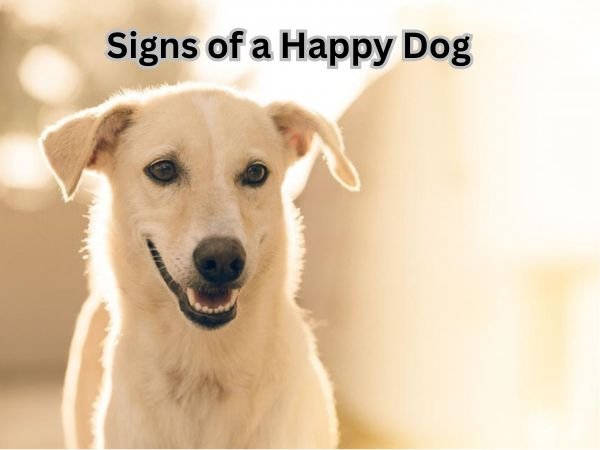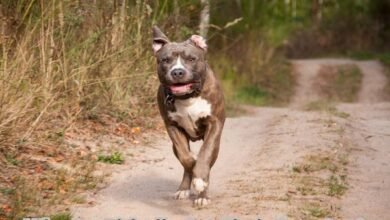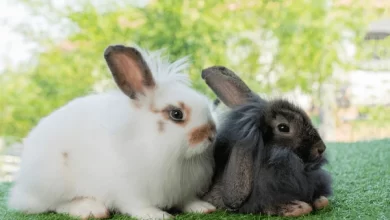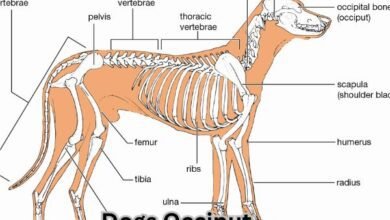
Picture this: you’re sitting on your couch after a long day, and your furry companion settles beside you with a contented sigh. But have you ever wondered if that peaceful moment truly reflects your dog’s inner happiness? As pet parents, we often find ourselves second-guessing whether we’re providing the love and care our four-legged family members deserve. The truth is, our dogs are constantly communicating their emotional state through subtle behaviors and body language that many of us overlook. Understanding the Signs of a Happy Dog isn’t just about satisfying our curiosity—it’s about deepening that incredible bond we share with our canine companions.
In this article, we’ll explore five powerful indicators that reveal when your dog is genuinely thriving and feeling loved. These aren’t just behavioral observations; they’re windows into your dog’s heart, showing you exactly how your care and affection translate into their daily joy and wellbeing.
Signs of a Happy Dog- Why Understanding Dog Happiness Matters
Recognizing when a dog is happy is more than just seeing a wagging tail. Understanding dog happiness is important because it helps pet owners care better for their furry friends. Here’s why it matters:
- Links to overall health: A happy dog usually has better physical health.
- Reflects emotional well-being: Dog emotional health shows in their behavior and mood.
- Boosts canine well-being: Happy dogs experience less stress and fewer health issues.
- Strengthens bonds: Noticing happiness signs improves the relationship with your dog.
By paying attention to these signs, owners can create a joyful life for their dog and keep them thriving in both body and spirit.
Indicator 1: Joyful Body Language and Tail Wagging
One of the clearest signs your dog is happy is their body language. Dogs use their bodies to tell you how they feel, and a joyful dog often looks relaxed and playful.
- Relaxed posture: A happy dog moves with ease, showing loose muscles and smooth, flowing movements. They won’t seem stiff or tense.
- Tail wagging: Not all tail wags are the same. A wide, loose wag usually means your dog is excited and content. On the other hand, a stiff, slow wag may signal uncertainty or stress.
- Play bow: This classic dog pose is a playful signal. Your dog lowers their chest to the ground while keeping their rear raised, inviting fun and interaction.
- Wiggly and happy dance: Sometimes dogs express happiness with full-body wiggling or little jumps. This “happy dance” shows they are genuinely excited and enjoying the moment.
For example, when your dog greets you at the door with a big wag and bow, they’re telling you how much they missed you and want to play. Paying attention to these joyful movements helps you understand your dog’s mood and meet their emotional needs. Encouraging playtime and positive interactions will keep these happy signs coming!
Indicator 2: Positive Facial Expressions and Vocalizations
One of the clearest signs your dog is happy can be seen in their face and the sounds they make. Dogs use facial expressions and vocalizations to show how they feel, and happy dogs have some easy-to-spot signals.
Facial Expressions
- Soft, relaxed eyes: When a dog’s eyes look gentle and calm, it often means they feel safe and happy.
- Open mouth “smile”: A relaxed dog may have an open mouth that looks like a smile. This is a good sign the dog is content.
- Relaxed ears: Happy dogs hold their ears naturally, not pinned back or stiff.
- Calm face: The overall look of peace and contentment on the dog’s face shows they are at ease.
Vocalizations
- Happy barks: Not all barking is bad! Happy dogs often bark with a light, playful tone.
- Playful sounds: Whines, chirps, or soft growls while playing are signs of excitement and joy.
- Calm vocalizations: Quiet grunts or sighs can show your dog is comfortable and relaxed.
Watching your dog’s face and listening to their sounds is a great way to understand how they feel. When you see these signs, it’s a good moment to share affection and playtime. These simple clues help build a deeper bond with your furry friend and keep their emotional health strong.
Indicator 3: Enthusiastic Appetite and Meal Excitement
A happy dog often shows their joy through food. One clear sign is a healthy appetite. When dogs look forward to their meals and eat well, it means they feel good inside.
- Healthy Appetite: A dog that enjoys eating and finishes their meal regularly is usually content. If your dog wavers between eating and refusing food, it could be a sign of discomfort or stress.
- Excitement During Meal Prep: Notice if your dog gets excited when you start preparing their food. Tail wagging, focused attention, and happy barks are all signs of anticipation and pleasure.
- Consistent Eating Habits: Happy dogs tend to have steady eating patterns. They don’t skip meals or show reluctance, which reflects overall well-being.
Food enjoyment connects deeply to a dog’s emotional state. Dogs that feel safe, loved, and relaxed often show it at mealtime by eating eagerly. For example, a dog who happily greets their food bowl and eats with gusto is expressing contentment. This enthusiasm around food shows more than just hunger—it’s a sign of mental and physical wellness.
If a dog suddenly loses interest in their food or shows changes in eating habits, it could be a sign to check on their health or emotional state. Maintaining a balanced diet and positive mealtime routine fosters a happy dog that looks forward to every meal.
By paying attention to these meal-time behaviors, owners can better understand their dog’s happiness and overall health.
Indicator 4: Playful Energy and Social Engagement
A happy dog often shows lively, playful energy and enjoys social interactions. This indicator is a clear sign of good canine well-being. Here are some key points to look for:
- Willingness to initiate play: Happy dogs will often bring their toys to you or start playful behaviors like gentle biting or chasing.
- Seeking interaction: They love spending time with their owners and other pets, showing excitement when they see familiar faces.
- Curiosity during walks: A happy dog explores its surroundings with interest, sniffing new smells and checking out different sights.
- Age-appropriate energy levels: While puppies are naturally energetic, older dogs will show playfulness in ways suited to their age and physical ability.
For example, your dog might nudge you with a toy to start a game of fetch, or happily greet a neighbor’s dog with a friendly wag and playful bow. These behaviors show they feel safe, loved, and comfortable in their environment.
Encouraging play and social time is simple and rewarding. Set aside regular play sessions, visit dog-friendly parks, or take different routes on walks to spark curiosity. This not only supports your dog’s emotional health but also strengthens your bond.
By recognizing and nurturing your dog’s playful energy and social needs, you help keep their spirits high and their life full of joy.
Indicator 5: Comfort and Trust Behaviors
When a dog feels safe and happy, they show it through comfort and trust behaviors. These actions tell you that your dog trusts you and feels at ease in their home. Here are some key signs to look for:
- Rolling Over and Showing Belly
When a dog rolls onto their back and shows their belly, it means they trust you completely. This vulnerable position shows they feel safe. It’s also a way they ask for belly rubs, which is a sure sign of comfort. - Seeking Physical Affection and Cuddles
Happy dogs often come close for petting or cuddles. They enjoy your touch and want to be near you. If your dog nudges you with their nose or rests their head on your lap, it’s their way of saying they love your company. - Restful, Peaceful Sleep
A dog that sleeps well is usually content. If they relax deeply and don’t startle easily, it means they feel secure in their space. Peaceful sleep is a sign of emotional calm and happiness. - Following Owners Around the House
Dogs that follow you from room to room show attachment and trust. They like being close because it makes them feel safe and connected. This behavior often means your dog enjoys your presence and feels happy when near you.
These comfort and trust behaviors are clear signs your dog feels happy and loved. Watching for them can help strengthen the bond with your furry friend every day.
Tips for Maintaining Your Dog’s Happiness
Keeping dogs happy takes a little effort but brings big rewards. Here are some simple dog well-being tips that can help pet owners create a joyful life for their furry friends.
Exercise Daily
- Go for walks or play fetch. Dogs need physical activity to stay healthy and happy.
- Try different types of exercise like running, swimming, or hiking to keep things fun.
- A tired dog is usually a happy and well-behaved dog.
Provide Mental Stimulation
- Use puzzle toys or treat-dispensing games to challenge your dog’s mind.
- Teach new tricks or commands regularly to keep their brain active.
- Mental exercise helps reduce boredom and unwanted behaviors.
Keep a Consistent Routine
- Dogs thrive on routine, so try to feed, walk, and play at the same times each day.
- A predictable schedule helps reduce stress and makes your dog feel secure.
Show Affection and Attention
- Spend quality time cuddling and talking to your dog.
- Praise your dog often to build confidence and happiness.
- Dogs are social animals and need love just like people do.
By focusing on these easy tips, pet owners can keep their dogs happy and healthy every day. Small actions like regular playtime, mental challenges, steady routines, and lots of affection go a long way in boosting dog emotional health and overall well-being. Happy dogs make for happy homes!
Conclusion
Recognizing these signs helps strengthen the special bond between humans and their dogs. This connection is essential for both the dog’s emotional health and overall happiness. Pet owners who take time to observe their pets not only care better for their dogs but also enjoy a deeper, more rewarding relationship.
Take a moment each day to watch your dog closely. Understanding your dog’s feelings through these signs of a happy dog can make a big difference in their life and yours. It’s a simple step that shows how much you care.
FAQ
What are the signs of a happy dog?
A happy dog shows wagging tails, relaxed body, bright eyes, playful energy, and good appetite. They may cuddle, lick, or follow you around. These behaviors show love, trust, and comfort in their environment.
How do I know if my dog loves me?
Dogs show love by wagging their tail, licking your face, following you, leaning on you, and sleeping near you. They may bring toys or nuzzle you. These small actions are powerful signs of affection and happiness.
Do happy dogs smile?
Yes, happy dogs often appear to smile. Their mouth relaxes, tongue hangs out, and eyes look soft. This expression, combined with playful behavior and tail wagging, shows they feel comfortable and joyful around you.
Can body language show a dog’s happiness?
Absolutely. Relaxed ears, soft eyes, wagging tail, playful jumps, and rolling on their back are clear body language signs. A happy dog looks relaxed and eager to interact with you or their surroundings.
How do I make my dog happier?
Spend quality time with your dog. Give daily walks, play games, provide healthy food, and show affection. Positive attention, training, and socialization also keep dogs mentally and emotionally happy. Love and routine are key.



